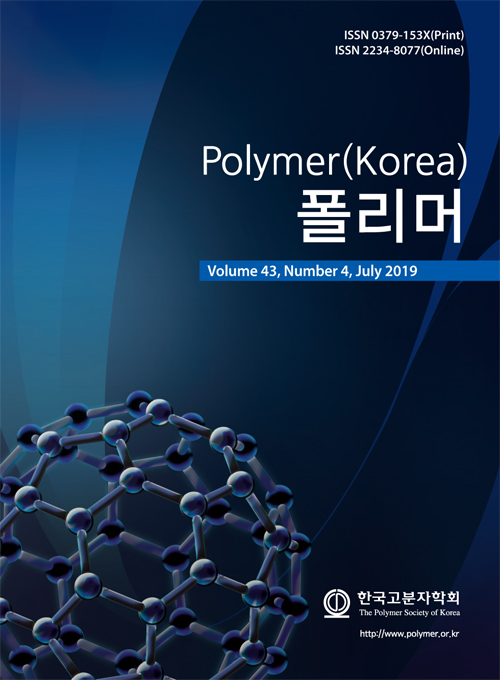- Preparation of Cellulose Propionate Membrane from Waste Wood and Its Potential Application as a Fine Particle Filter
Department of Biomaterials Science, Life and Industry Convergence Institute, Pusan National University, Miryang 50463, Korea
- 폐목재를 이용한 셀룰로오스계 여과막 제조 및 미세입자 필터로의 활용 가능성에 관한 연구
부산대학교 생명자원과학대학 바이오소재과학과
With increasing demand for improved air quality, the filtration of particulate matters using membranes has received a great attention. Herein, we report a method to fabricate a porous membrane from a waste pulpwood cellulose suitable for fine particle filters. To increase solubility in organic solvents, propionate groups were introduced to the cellulose dissolved in ionic liquids. Cellulose propionate (CP) membranes were prepared by phase inversion from the CP casting solution coated on non-woven fabrics and its porous structure, mechanical properties and permeability were characterized. The CP membranes had an average pore diameter of 0.15 μm and showed good mechanical durability confirmed by repeated bending tests. In filtration tests using 2 μm fluorescent particles, CP membranes exhibited a water permeability of 120 LMH/bar and high rejection rate of more than 99%. The filter preparation using waste cellulose is economical in terms of reuse resources as well as useful for removing fine particles.
실내외 공기질 악화에 따라 필터를 이용한 미세입자 제거에 대한 관심이 높아지고 있다. 본 연구에서는 천연물이지만 낮은 용액가공성으로 응용이 제한되고 있는 폐목재 셀룰로오스를 이용해 미세입자 제거용 필터를 제조하고자 하였다. 유기용매에 용해성을 높이기 위해, 폐목재를 이온성 액체에 용해하고, propionate기를 도입하여 cellulose propionate(CP)를 합성하였다. Dimethyl sulfoxide(DMSO)에 용해된 CP 용액을 부직포에 도포한 후 상반전법으로 여과막을 제조하였고, 막의 기공 구조, 기계적 내구성 및 투과도를 측정하였다. CP 여과막은 평균 0.15 μm 직경의 기공을 가지고 있었고, 비교적 높은 유연성 및 기계적 내구성을 보였다. 2 μm 크기의 형광입자를 이용한 여과 실험 결과, 약 120 LMH/bar정도의 투과도를 보였고, 99% 이상의 입자 제거효율을 보였다. 폐목재를 활용한 여과막 제조는 자원을 재활용한다는 경제적 측면 뿐만 아니라 미세입자 필터로도 활용도가 높을 것으로 예상한다.
Keywords: cellulose, membrane, particulate matter, air filter
- Polymer(Korea) 폴리머
- Frequency : Bimonthly(odd)
ISSN 0379-153X(Print)
ISSN 2234-8077(Online)
Abbr. Polym. Korea - 2023 Impact Factor : 0.4
- Indexed in SCIE
 This Article
This Article
-
2019; 43(4): 527-531
Published online Jul 25, 2019
- 10.7317/pk.2019.43.4.527
- Received on Jan 6, 2019
- Revised on Mar 7, 2019
- Accepted on Mar 20, 2019
 Correspondence to
Correspondence to
- Seung Yun Yang
-
Department of Biomaterials Science, Life and Industry Convergence Institute, Pusan National University, Miryang 50463, Korea
- E-mail: syang@pusan.ac.kr









 Copyright(c) The Polymer Society of Korea. All right reserved.
Copyright(c) The Polymer Society of Korea. All right reserved.